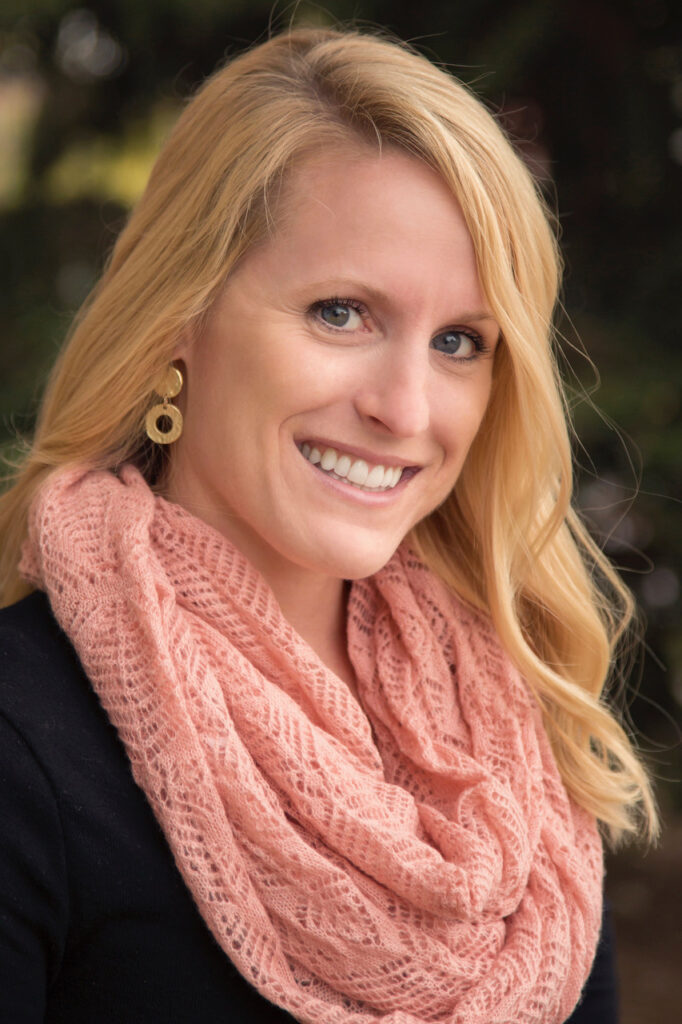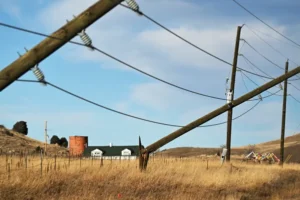FRIDAY FOCUS: Preventing Partner Violence Begins With Education, Strong Communities
Jody Sanborn leads the violence prevention program at the Wyoming Coalition Against Domestic Violence and Sexual Assault
- Published In: Other News & Features
- Last Updated: Oct 20, 2023


By Melissa Thomasma
Special to the Wyoming Truth
October marks Domestic Violence Awareness Month, but the Wyoming Coalition Against Domestic Violence and Sexual Assault’s work takes place year-round. Founded in 1987, the nonprofit engages myriad approaches to support organizations, programs and victims of intimate partner violence. One critical strategy is that of prevention — avoiding violence and assault before they happen in dating relationships.
The Wyoming Department of Health reported 33.9% of women and 30.5% of men in the state experience intimate partner physical violence, sexual violence or stalking in their lifetime — a number above the national average of one in three women and one in four men. The National Network to End Domestic Violence notes that while intimate partner violence remains an extensive problem, funding for victim support programs has diminished: Wyoming’s federal grants through VOCA (Victims of Crime Act) totaled $6.3 million in 2018, but dwindled to $2.3 million by 2021.
Jody Sanborn, 41, the Sheridan-based director of prevention for the Coalition, oversees two staff members who deliver public health-based programming in schools, nonprofits and community organizations statewide. She joined the Coalition in 2009, after managing the University of Wyoming’s on-campus violence prevention program for five years.
The Wyoming Truth spoke with Sanborn about risks and protective factors influencing violence patterns in Wyoming and how communities and individuals alike can help mitigate the harm. What follows are excerpts from the interview.
What inspired your work in violence prevention?
Sanborn: I studied psychology as a part of the McNair Scholars program [at UW], so I was able to do undergraduate research. That’s what really opened my mind to this field of working in trauma. I thought I was going to get a Ph.D. in clinical psychology and work with military vets. As I was doing an internship in trauma, I realized, “I don’t like being on the back end of this. I want to work on how we help stop this. How can we prevent trauma from happening in the first place?”
Domestic violence is an issue nationwide. What makes it unique in Wyoming?
Sanborn: When we look at national versus Wyoming statistics, across the board things like domestic violence and sexual violence have a higher rate of prevalence and incidence rates here. I hate using [exclusively] statistics to ground us and label Wyoming, because I think it creates this fear-based idea: things are so bad and so hard to change. Using statistics in that way sets us up to believe something is broken here and we have to fix it — it starts us from a deficit framework, and that’s not really who we are….
I think there are certain traits and characteristics we pride ourselves in. We’re fiercely independent, pick ourselves up by the bootstraps, but all of these qualities and traits that so many people value can also be risk factors for domestic violence. So you have to find a way to approach this conversation with people, [by] saying it’s OK to be fiercely independent and have a strong work ethic and be proud of all of these things, but also acknowledge that we need to be able to ask for help.
The state’s geography influences these issues as well, correct?

Sanborn: In a few ways, yes. One of the things that’s really big in domestic violence is isolation — from friends and family, from connections to a support system or to services. You think about how rural and dispersed everything is in Wyoming. If you are a victim of domestic violence and you live in the far corner of Niobrara County, you have to travel a hundred miles to get to a place that offers domestic violence services. And then do you know them? Do you trust them? You’ve got to move your entire life to go get services at this shelter that you don’t know anything about.
And then there’s the stigma attached to it, right? Another huge risk factor — or barrier to access to services — is this stigma that’s attached to help-seeking behaviors.
What are the most impactful ways to prevent violence?
Sanborn: The biggest protective factor across the board — whether you’re trying to prevent violence or youth suicide or teen pregnancy, you name it — there’s one grounding protective factor through all of those, and that’s connectedness. . . . It can be belonging to a sticky adult, to a community, to a group of people, to school, to an after-school location, to a sports team — whatever it is, fostering that sense of belonging.
When you know that people know you and care about you, you’re more likely to feel supported. All of the literature, that is the key factor: just acknowledging people and connecting them to something or someone. When you feel like there are people looking out for you, people you can turn to. Also, knowing what resources are available to you — that knowledge is power for a lot of people.
Money plays a huge part in domestic violence [in terms of a victim’s ability to escape an abuser] and anytime we can increase economic supports for women and girls, that’s going to be a protective factor. Whether that’s through job skill training, providing daycare coverage so a mom can go to night classes or to a counseling session, all of these things. Providing training and resources around financial literacy is really important. When we think about opportunities for economic growth and development in Wyoming, that’s a big factor to consider.
What challenges do you face in implementing prevention programming?
Sanborn: [Historically, when we have done prevention,] we would go into middle and high school classrooms and talk about respect, equality, safety, equity and all of these things we know are protective factors against all forms of violence. Increasingly, we can’t talk about those things anymore when we go into schools because of more conservative policies. If students aren’t learning these things at home, or maybe they’re witnessing violence or power and control in the home, they don’t know any better. They don’t have anything to challenge that. And so they go on, and they’re just recreating it in their own lives. This increasing limitation is not unique to Wyoming. We know it’s going on across the country with other teams of preventionists. A lot of work has been trying to engage youth in non-traditional settings — clubs, organizations, teams and things like that.
What do you wish more people understood about domestic violence?
Sanborn: It doesn’t just happen to “those people” or “That’s a problem over there I don’t have to worry about.” When you do look at statistics — and like I said at the beginning, I hate relying on statistics — they’re telling, right? Domestic violence affects everyone, regardless of your race, your gender, your socioeconomic status. And there shouldn’t be shame around seeking help. . . .
Second, services need to be available in communities. Right now, our local community-based domestic violence and sexual assault service programs around the state need help. They are overworked and underpaid. Most of the programs around the state are operating on a shoestring budget, and [staff] have high stress and turnover. These programs that desperately need to exist and offer services often struggle to keep their doors open. We need to have increases at the state level in funding for domestic violence and sexual assault service programs.
If you or someone you know is experiencing partner or family member violence, contact the National Domestic Violence Hotline at 1-800-799-7233.













